So, the new Jordan Peterson book is out. Beyond Order, ’12 More Rules For Life’ a complement to his original 12 Rules For Life. The main difference this time around being that the focus is on Rules for becoming a human capable of surviving in complex and chaotic environments. As opposed to the first 12 Rules, which were all about becoming a human capable of living resiliently in a Simple world – i.e. it was largely for Feudal Millennials that had never been taught some of the difficult lessons of life. Like tidying up their room.
Anyway, the pair of books fit into two of the most important triangles in our Complexity Landscape Model (CLM). The first 12 Rules in effect being all about (steady-state) Operational Excellence, and the second 12 being about (liminal) Innovation World:
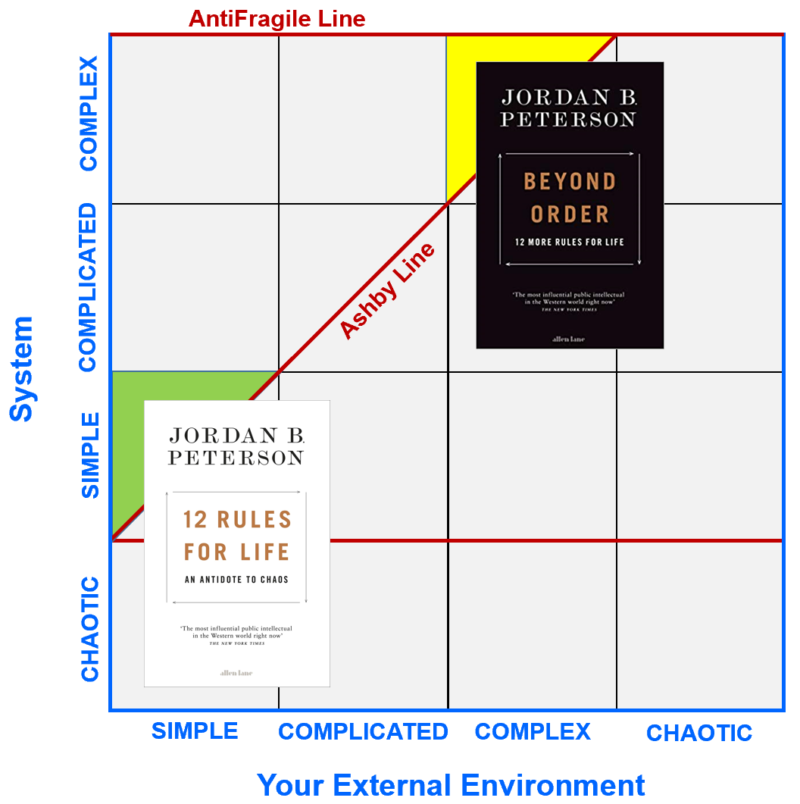
As I got further through the new book, I began to realise that there was a further innovation connection to be made. Specifically the Law Of System Completeness. Which tells us that any viable system must contain a minimum of six different elements. And since ‘being a human’ involves a system, that system must contain these six elements. Or rather two times six – one viable Tangible system and one viable Intangible system. Which, if my maths is anywhere up to scratch suggests twelve system elements in all. The question then was, was this something Peterson was aware of?
Time to start fitting his 12 Beyond Order Rules into the Law of System Completeness. The end result of which looks something like this:
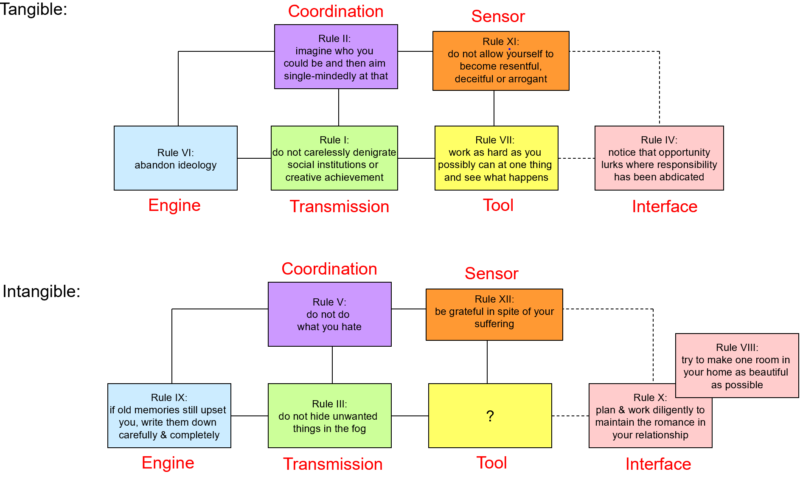
(As Peterson-fans will attest, some of his Rule titles are a little obtuse and their connection to the various elements of the complete system only become clear through a proper reading of the relevant chapter. If you’ve already read the book, and have a passing acquaintance with the Law Of System Completeness, I imagine you will be able to make the same connections that I have. If you haven’t read Beyond Order, you’re going to have to take my word for it. And if you’re not familiar with the TRIZ Law Of System Completeness, you may want to hum the bits you don’t understand.)
According to Peterson, the 12 new Rules found in Beyond Order were distilled down from an original list of 42 (life, the universe and everything?) There’s no real explanation for how this process was conducted, but my impression is that he ended up with the twelve that had most frequently helped patients in his clinical psychology practice. There was, in other words, no attempt on his part to create any kind of coherent system of Rules. The fact that he ends up with eleven of the twelve that the Law Of System Completeness would have told him to go look for, therefore, is rather impressive.
Impressive enough to go back and re-visit the initial 12 Rules to see how well he’d done to map the complete system of Simple-Simple humanity. Here’s the result of doing that analysis (where, again, it was necessary to go back and re-read the whole thing in order to translate the obtuse rule names into their intended meaning – ‘petting cats’ for example doesn’t have an awful lot to do with petting cats, but quite a lot to do with human fragility):
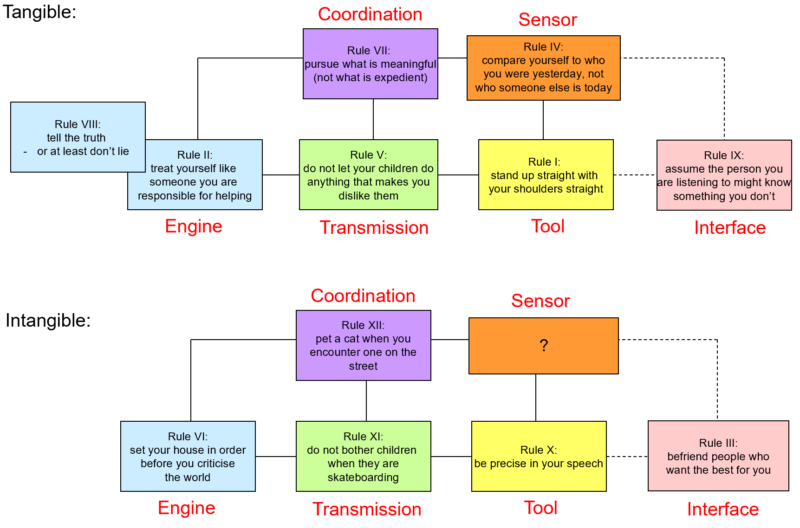
Another impressive eleven-out-of-twelve score.
Close enough on both counts for me to start thinking about what the two ‘missing’ Rules might be. While I think I can do obtuse titles, I quickly found myself out of my depth in terms to coming up with something either pithy or meaningful. Which then usually means adopting the classic TRIZ stance of ‘someone, somewhere already solved your problem’. Were there other books, in other words, that might be able to slot into Peterson’s holes?
The Law of System Completeness offers some clues of course. As far as Beyond Order is concerned, Peterson doesn’t have a Rule to cover the Intangible ‘Tool’ part of the system. In the first book he did, and as I was re-reading that Rule, ‘be precise in your speech’, the best connection I could make to other works was my second all-time favourite book, Zen & The Art of Motorcycle Maintenance. The thrust of that book was (a metaphysics of) Quality. Pirsig extends this discussion in his follow-on, and my all time favourite book, Lila: An Inquiry Into Morals. The extension primarily centring around ‘dynamic quality’… what I firmly believe forms the missing piece in the Beyond Order jigsaw:
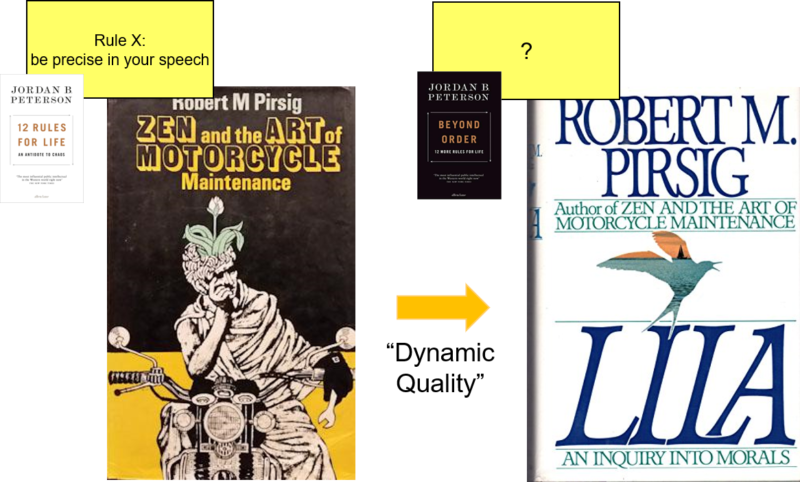
The Law of System Completeness also offers up clues as to the missing piece in Peterson’s first 12 Rules – the Intangible ‘Sensor’ is what needs to be found. Which means we’re in the realms of measurements and feedback loops as they pertain to the emotional aspects of our steady-state human ‘system’. In this case I wasn’t able to find a single solution to fill in the gap. The ‘character’ aspects of Steven M.R. Covey’s book ‘The Speed Of Trust’ seemed to capture some of the Sensor story, but missed much of what I see as the most frequent (mis)understanding problems that occur in human communication, biases. These days, mention of that word usually sends me immediately digging out the Bias Codex (https://www.darrellmann.com/cognitive-biases-as-a-system/). And there it was, Peterson’s 12 Rules For Life missing piece was two pieces…
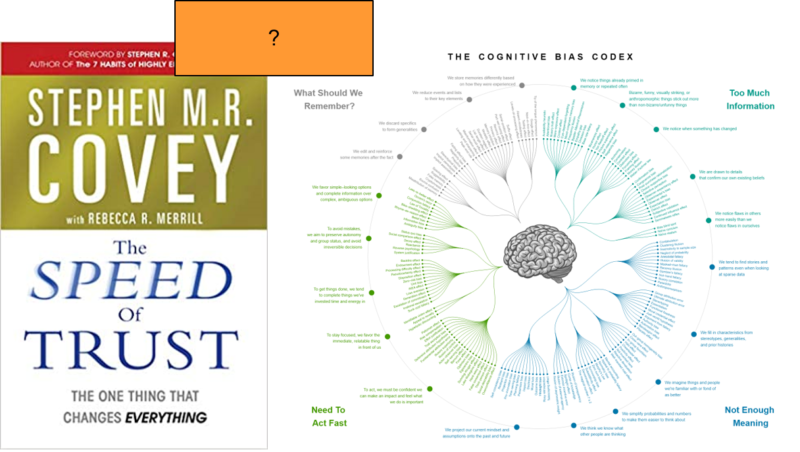
…unless, that is, you know different?
